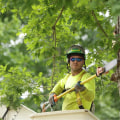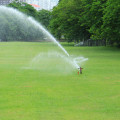At any time between late autumn and early spring, it is better to prune or prune trees. In general, after the leaves fall and before the flowers appear, it is the ideal window. Talk to your local arborist about pruning before spring flowers emerge. These are the trees that shed their leaves every year.
Most deciduous trees need to be pruned in late fall through winter, according to the Extension Service's Wisconsin Horticulture division. They have entered their dormant season and it is easy to see the frame of the branches, and the activity of insects and diseases have disappeared. However, not all trees and shrubs should be pruned in winter or early spring. Generally speaking, shrubs and trees that bloom on a new growth should be pruned in the winter and early spring, while those that bloom on an old growth should be pruned in late spring or summer (i.e.
As leaves fall from trees each fall, branches that were once covered by a canopy of dense foliage emerge from their hiding place. Although many gardeners would rather never deal with the disaster of falling leaves, I enjoy this moment as an opportunity to inspect every treetop. It is now that I take careful note of any branches I need to remove from my trees. Taking advantage of these months of inactivity gives me time to develop a plan for pruning and trimming trees in my landscaping.
Because the goal is not to change the size or shape of the tree, thinning must be constant throughout the tree. You only need to remove 10 to 20 percent of tree branches from the edge of the canopy. Large trees benefit from removing end parts of branches between 1 and 4 inches in diameter. Small ornamental and fruit trees can be thinned by removing smaller branches between ¼ and ½ inch thick.
You need to prune the trees to thin out the crown, so that the tree looks completely unpruned. As a rule, light summer pruning can be done on most deciduous trees and shrubs. A more intensive pruning should be carried out when the tree is inactive, preferably in late winter, before active growth begins. Trees such as maples (Acer) bleed heavily sap and should be pruned in winter while trees are dormant.
Shrubs that bloom in spring, such as lilac and forsythia, bloom during the growth of the previous season and must be pruned within two weeks after flowering. Pruning at any other time will reduce or eliminate flower display. For most tree species, pruning trees in spring can give good results. Although sap is increasing on the tree during this period of time, early spring makes it possible to easily identify problem branches before the tree has completely defoliated.
Trees that receive the right amount of pruning when young will need less excessive pruning as they grow. Having an ISA-certified arborist examine your trees before pruning them is crucial to ensuring proper care. In addition to exposing problem areas, tree pruning in spring makes it easy to see which branches are dead and subject to removal. The tree will have already used its energy to start a new growth, and it will not be able to recover from pruning as well or as quickly.
Although it is possible to prune trees in summer, it can be more difficult because once the leaves cover the trees completely, it can be difficult to identify problem branches. While it is generally best to prune all trees in autumn and winter, it is important to consider the particular problems of a given species. Save tree care pruning when the tree is actively growing in early spring or completely dormant in the winter months. However, when there is a risk of certain diseases, such as oak wilting, painting the wounds of tree pruning is an important protective measure.
Pruning these tree species in summer helps you avoid the sticky mess you might experience with these species at other times of the year. Pruning trees at the right time in the fall or winter cannot compensate for the damage caused by excessive pruning, lion's tail or hedging. Despite the fact that a sleeping tree can better withstand these harmful types of pruning, the overall health of the tree can be irreparably harmed. Late winter and early spring pruning helps trees sink all of their precious energy to produce healthy new growth once the climate warms up.


